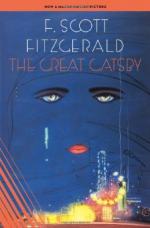|
This section contains 1,378 words (approx. 5 pages at 300 words per page) |

|
How the Jazz Age and 1920s America are Portrayed in The Great Gatsby
Summary: Explores The Great Gatsby, by F. Scott Fitzgerald. Maintains that it is a bitter, savage satire on the moral failure of the jazz age, which is placed within a perspective of American images of success and American history. Explores Fitzgerald's modernist approach to the novel.
It would be fair to say that `The Great Gatsby' is a satire on the moral failure of the jazz age, yet to label the novel as bitter and savage is questionable. Along with the many ways in which Fitzgerald conveys the immorality of America at this period in time, he also displays both American images of success and American history - these ideas are expressed through the writer's strong use of language, which communicates his satirical views.
Undoubtedly, Fitzgerald uses a variety of images to display moral vacuity, thereby reflecting on what he is saying about the Jazz age. His description of the `valley of ashes' is a distinct example, `a fantastic farm where ashes grow like wheat,' whereby the repetition of ashes both symbolises death and also furthers the inversion of this American ideal, whilst the alliteration enforces the excess of it. These images created...
|
This section contains 1,378 words (approx. 5 pages at 300 words per page) |

|


